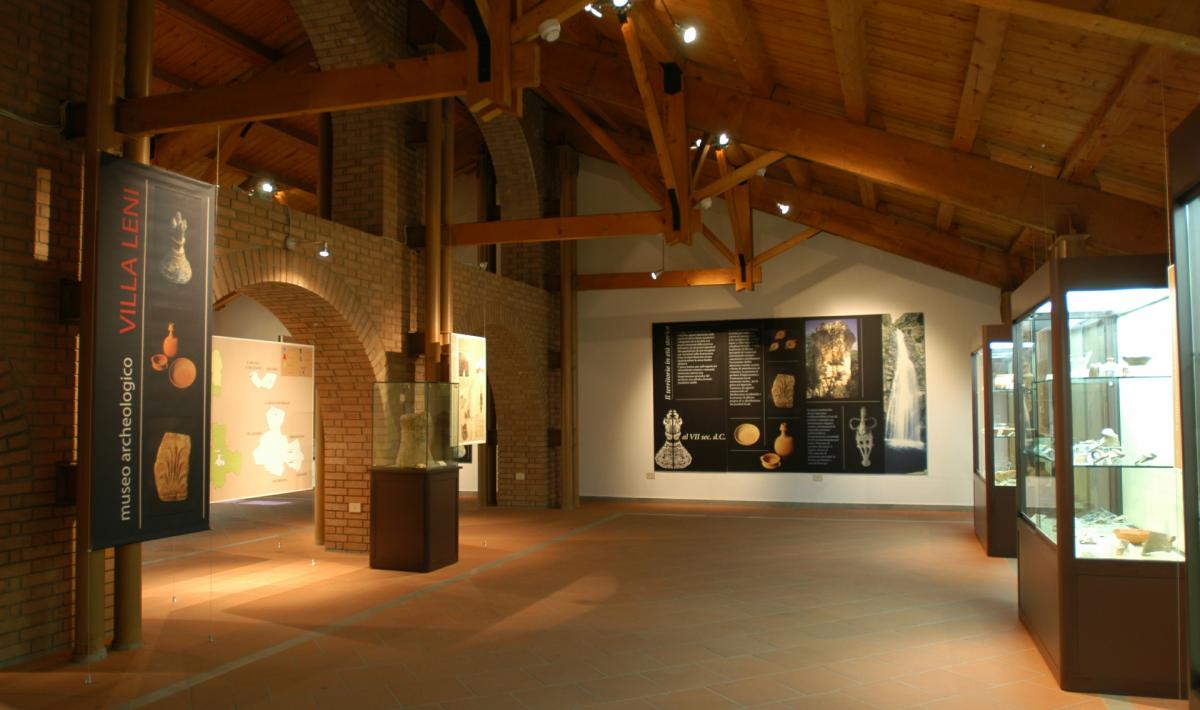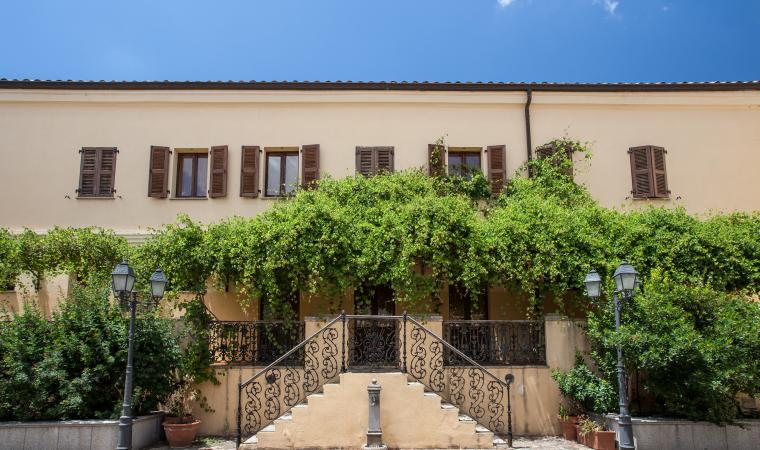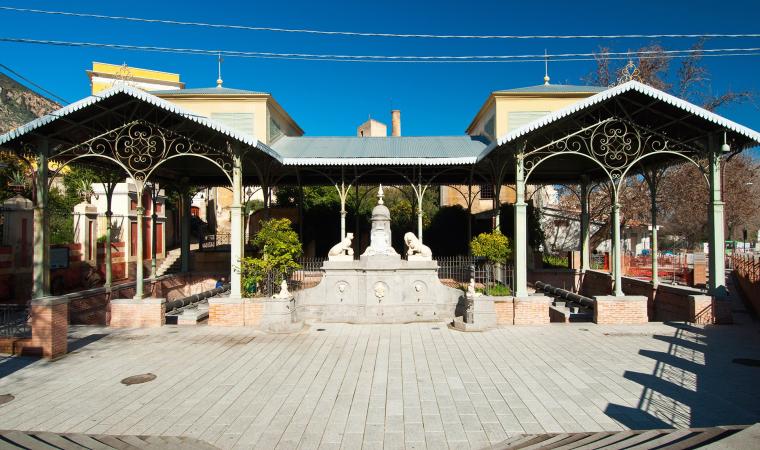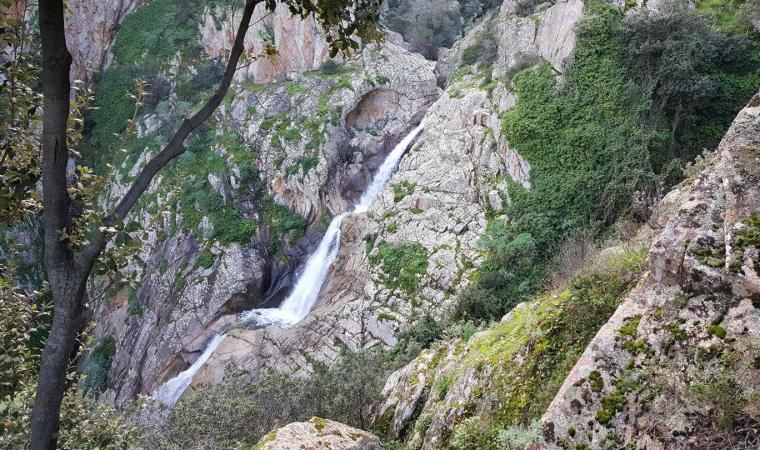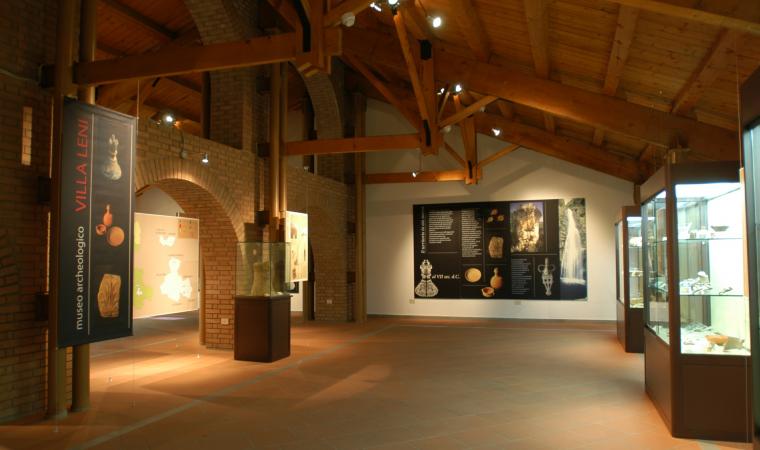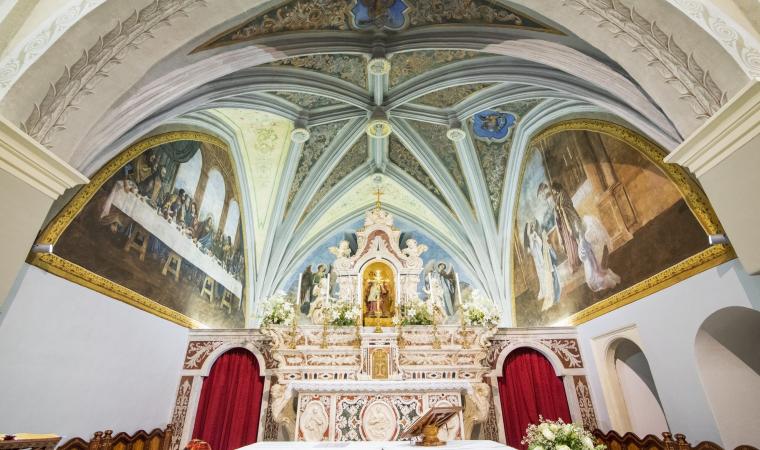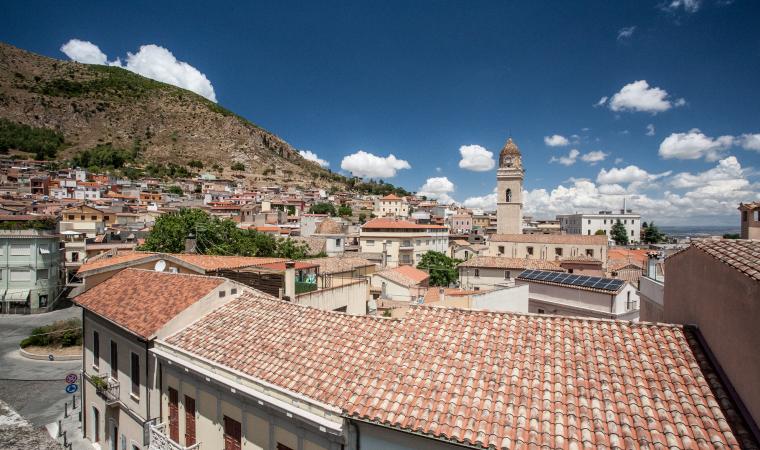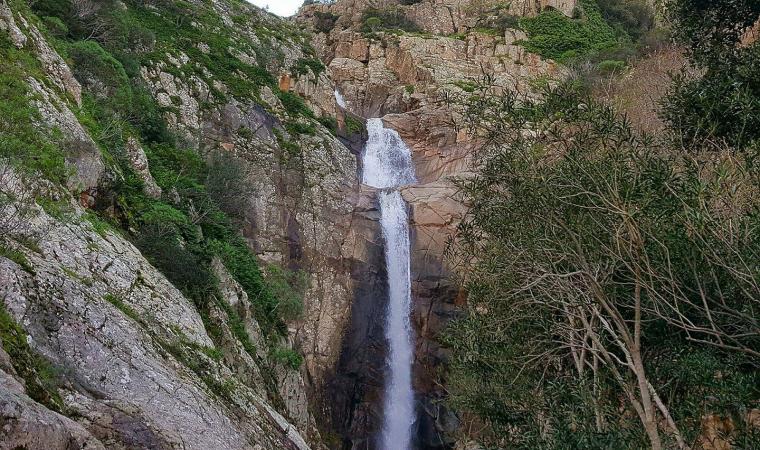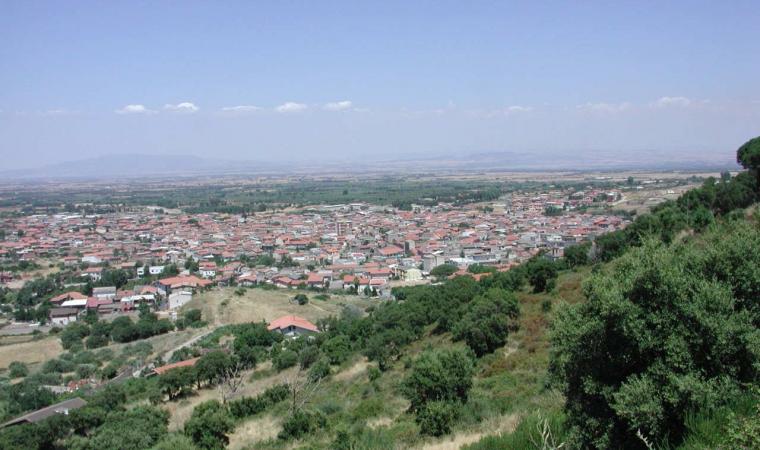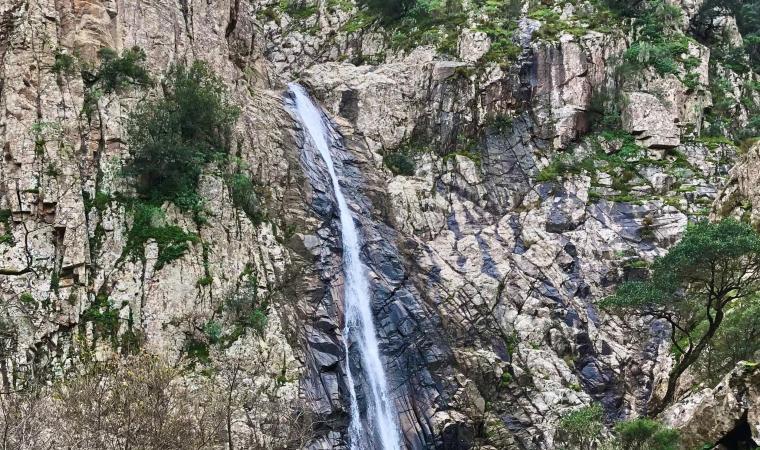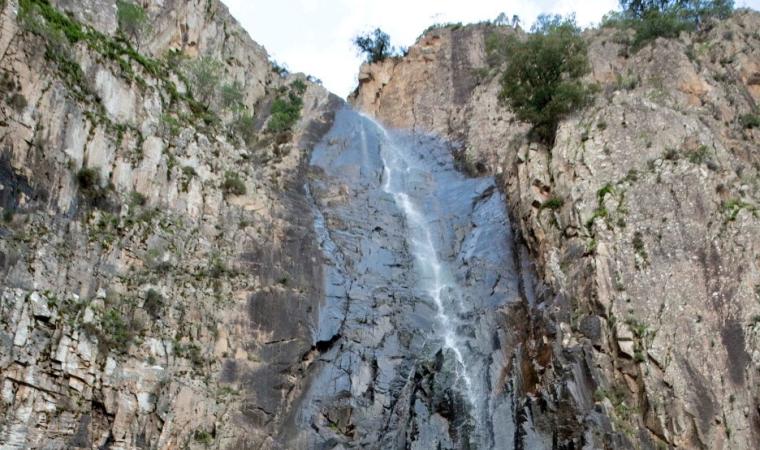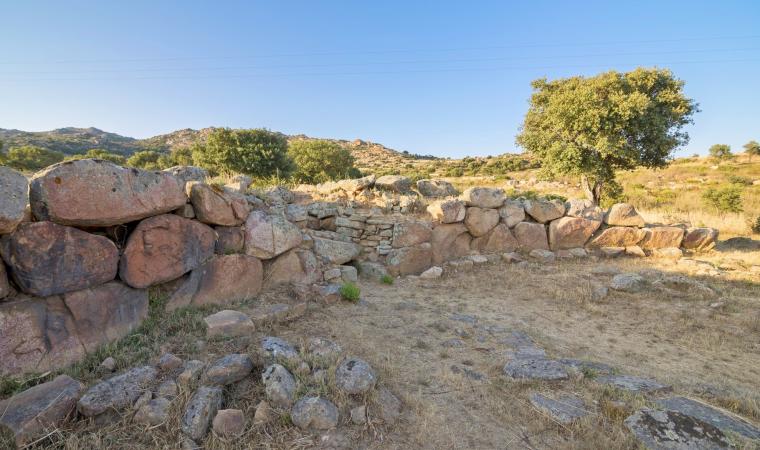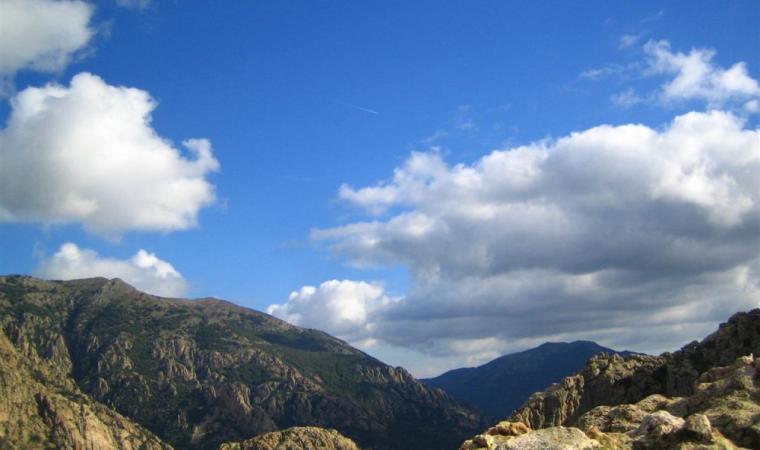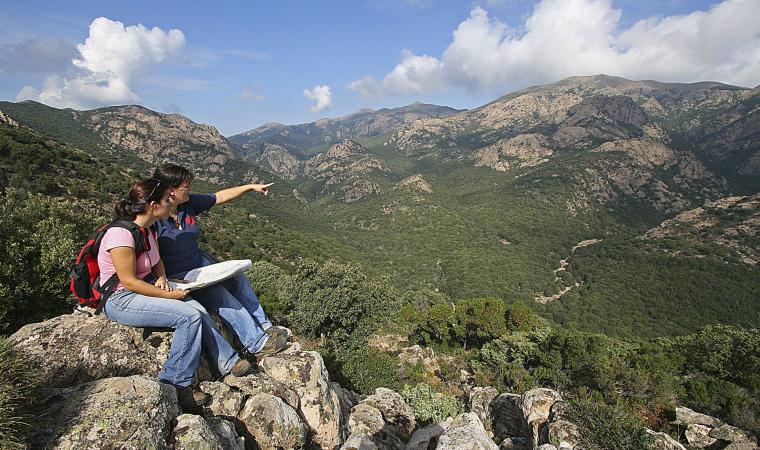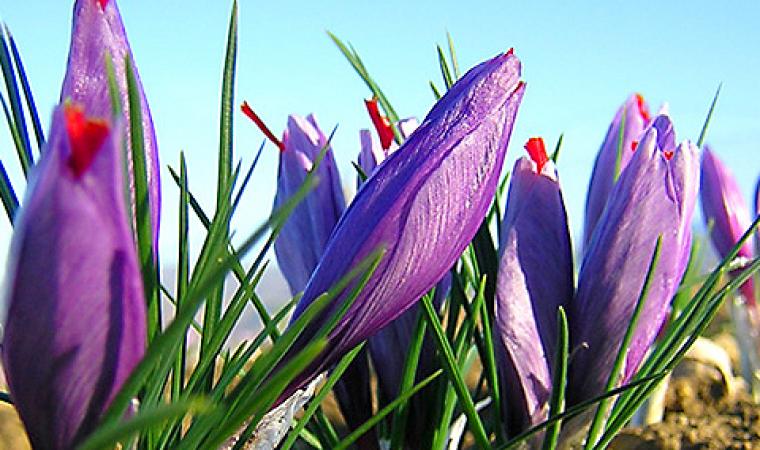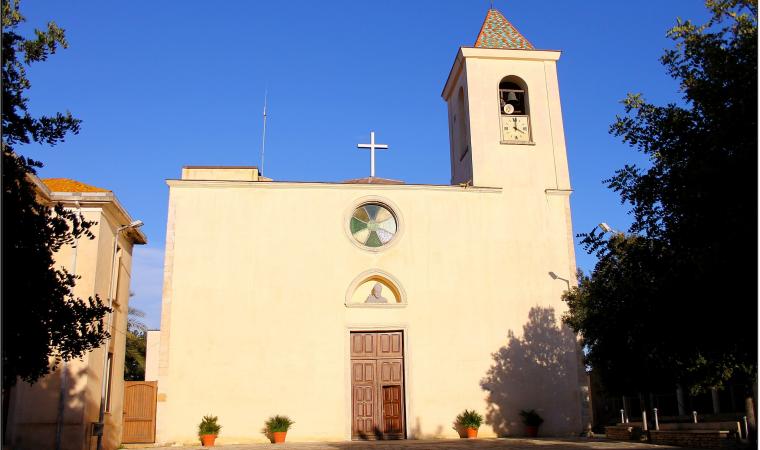Evidence recovered in the sites of Villacidro and other nearby villages tells us about prehistoric times and ancient history in the Medio Campidano province. In the Villa Leni civic archaeological museum, there are artefacts on display, ranging from the Neolithic period to the Copper Age and the Bronze Age and from the Punic Age to the Ancient Roman period, until the Early Middle Ages. The exhibition, which has been held since 2003 in the former grain bank, an evocative building dating back to 1761, is equipped with educational panels, two of which provide a scenic introduction to the landscape of the Villacidro territory from the Neolithic age to the 7th century AD. You can also gather information, supported by the guides, from illustrations of findings and detailed chronological outlines.
Ample space is devoted to the sites in Villacidro: you can admire the stone instruments from the Nuragic village of Cottega (12th century BC), a bronze model of a quadrilobed nuraghe (chosen as the symbol of the museum), Punic pottery, Imperial Roman grave goods from the incineration necropolis of Ruinas, in which a beaker made of meticulously crafted glass stands out, ceramic artefacts and bronze jewellery dating back to the late-ancient and Byzantine age. In Citra Villa, the first inhabited nucleus from which the current village (perhaps) emerged, the ruins of two thermal baths dating back to Roman times still remain.
Artefacts ranging from decorated pottery belonging to the Ozieri culture (3200-2800 BC) to bronze necklaces dating back to the late ancient and Byzantine period come from various nearby municipalities (Mogoro, San Gavino, San Nicolò Arcidano and Serramanna). The bronze ox-hide type ingots, associated with votive knives, are of particular interest and come from s'Acqua Cotta, and the earthen jar that comes from the nuraghe of su Sonatori, both sites in Villasor. Then there is a lithic model of a monotower nuraghe from Vallermosa, discovered in Matzanni.
Leni Villa is the first stage on the journey of discovery of Villacidro, the town in which writer Giuseppe Dessì - winner of the Strega Prize (1972) - was born, to whom the Dessì cultural park is dedicated, inside the splendid Mount Linas, the elevation richest in natural monuments, from the forest of Montimannu to the sa Spendula waterfall. The most illustrious citizen of Villacidro glorifies natural beauty and centuries-old agricultural and pastoral traditions of the 'mountain village'. The itinerary continues on with the museum of sacred art and with the pharmaceutical museum of sa Potecarìa. Among the religious buildings, the sixteenth-century parish church of Santa Barbara is a must and, among the municipal ones, there is the public washhouse, inaugurated in 1893.

